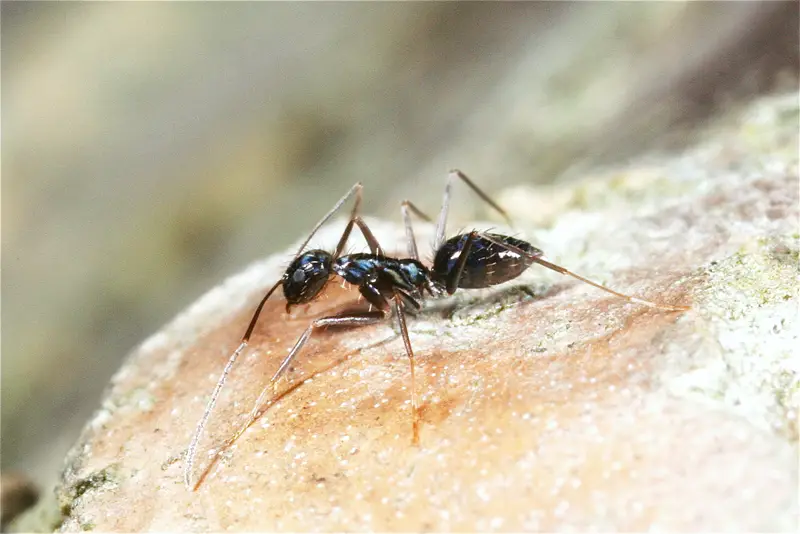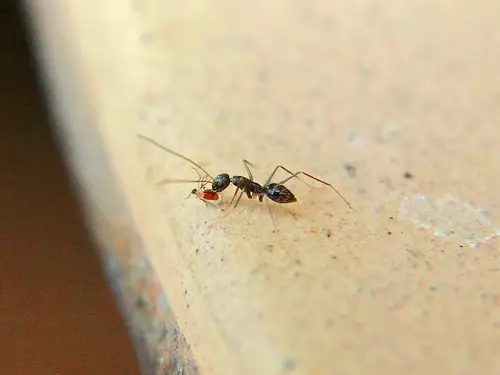Imagine a warm, sunny day in your backyard. You’re relishing the outdoors when suddenly, you spot a trail of tiny, fast-moving ants swarming your picnic area. These aren’t your typical ants; these are Longhorn Crazy Ants, and they’ve established their residence in your domain. But what exactly are these ants, and why should you be concerned?
These ants captivate us as an enigma in the realm of invasive species. Although they may initially appear harmless, their cryptic behaviors, invasive inclinations, and erratic movements introduce a unique challenge. Their remarkable resilience once they’ve settled in an area demands a deeper understanding of their characteristics and the potential consequences they bring.
Continuing our expedition into the world of Longhorn Crazy Ants, we will illuminate their ecological impact, the disruptions they unleash upon local ecosystems, and the effective strategies required to counter their influence.
Join us on this journey as we unveil the mysteries surrounding these diminutive yet formidable invaders and learn how to shield our homes and environments from their unrelenting presence.
What do Longhorn Crazy Ants look like?
Longhorn Crazy Ants, scientifically known as Paratrechina longicornis, are rather small insects with distinctive characteristics that set them apart from other ant species.
Here’s a description of their appearance:
- Size: They are tiny, measuring around 1/8 inch in length. This diminutive size makes them quite inconspicuous at first glance.
- Color: They typically have a reddish-brown to blackish-brown coloration. Their bodies can appear somewhat shiny.
- Antennae: One of their distinguishing features is their notably long antennae. These antennae can be as long as or even longer than their bodies.
- Legs: They have relatively long legs compared to their small body size.
- Body Shape: They have slender, elongated bodies, and their thorax (the middle section of their body) is notably uneven in shape, which adds to their distinctive appearance.
What Do Longhorn Crazy Ants Eat?

Longhorn Crazy Ants, like many other ant species, have a varied diet, which can include both natural food sources and human-made items.
Here’s what Longhorn Crazy Ants typically eat:
- Sugary Substances: These ants are naturally drawn to sugary substances, including nectar from flowers, honeydew produced by aphids and scale insects, and other sweet liquids. Their preference for sugary foods often brings them into contact with plants and other insects.
- Proteins: They have a dietary need for protein sources. They actively hunt and consume small insects, including deceased ones, as well as animal carcasses when they are available.
- Human Food: These Ants are opportunistic feeders and actively infiltrate homes and kitchens in search of human food. They are particularly attracted to sugary snacks, crumbs, and any accessible food items.
- Plant Material: In addition to their sugary diet, these ants may actively feed on plant secretions and small plant parts, such as seeds.
- Honeydew: They engage in a mutualistic relationship with honeydew-producing insects like aphids and scale insects. They actively milk these insects for honeydew by stroking them with their antennae and actively consuming the sugary substance they produce.
Where Do Longhorn Crazy Ants Live?
Longhorn Crazy Ants are highly adaptable and can establish their nests in various environments.
Here are some common places where Longhorn Crazy Ants are known to live:
- Natural Habitats: These ants inhabit natural outdoor settings, nesting in soil, leaf litter, and decaying wood. They also occupy cavities in trees and shrubs.
- Urban and Residential Areas: Longhorn Crazy Ants invade human-made structures, nesting in and around homes, buildings, and gardens. Inside buildings, they establish nests in wall voids, under floorboards, and within electrical equipment.
- Electrical Equipment: Longhorn Crazy Ants are particularly drawn to electrical equipment, often nesting in outdoor electrical boxes, air conditioning units, and circuit breakers. Their presence in these locations can result in electrical malfunctions and damage.
- Potted Plants: They commonly nest in potted plants and containers, especially if suitable nesting material and moist soil are available.
- Transportation Vehicles: Longhorn Crazy Ants have been discovered in vehicles such as cars, trucks, and boats. They create nests in various nooks and crannies of these vehicles, potentially spreading to new areas.
- Under Rocks and Debris: Outdoors, they construct nests under rocks, fallen branches, and other debris. These nests are often inconspicuous and challenging to detect.
- Human Food Sources: When foraging for food, Longhorn Crazy Ants can be found in kitchens, pantries, and other areas where food is stored or prepared.
Do Longhorn Crazy Ant Bites?
Longhorn Crazy Ants do have the ability to bite, although their bites are generally less aggressive and painful compared to certain other ant species. When provoked or feeling threatened, these ants may resort to biting as a defensive response.
The sensation from a Longhorn Crazy Ant bite is typically mild, causing only brief discomfort, akin to a small pinch or sting. Most individuals do not experience intense pain or severe allergic reactions from such bites.
However, it’s crucial to acknowledge that individual reactions can vary. Some people may exhibit heightened sensitivity to ant bites, which could result in stronger reactions. In such cases, medical attention may be necessary, especially for those with known ant bite allergies.
How to Get Rid Of Longhorn Crazy Ants?
Getting rid of Longhorn Crazy Ants can be a challenging task due to their resilient nature and adaptability.
‘Here are effective steps to help eliminate them:
- Identify the Nest: Locate their nests or entry points. Look for ant trails, especially around food sources or potential nesting areas like soil, potted plants, or electrical equipment.
- Remove Food Sources: Eliminate all food sources accessible to the ants. Keep food stored securely in airtight containers, clean up crumbs, and fix any leaks or spills promptly.
- Seal Entry Points: Seal cracks, crevices, and gaps in your home’s structure to prevent ants from entering. Pay attention to windows, doors, and utility openings.
- Natural Repellents: Use natural repellents like diatomaceous earth or cinnamon near entry points and along ant trails. These substances can deter ants from crossing.
- Ant Bait: Use ant baits specifically designed for sugar-loving ants. Place the baits near their trails and nesting areas. They will carry the bait back to the colony, effectively eliminating it.
- Professional Pest Control: If the infestation persists or is extensive, consider hiring a professional pest control service experienced in dealing with Longhorn Crazy Ants.
- Regular Maintenance: Maintain a clean and ant-unfriendly environment. Regularly clean your home, remove debris from the yard, and trim vegetation near your house.
- Monitor and Repeat: Continue monitoring for any signs of re-infestation and repeat the above steps as necessary.
Conclusion
In summary, Longhorn Crazy Ants, with their enigmatic behavior and adaptable nature, pose unique challenges for homeowners and ecosystems alike. It is crucial to understand their appearance, diet, habitat, and potential bites.
To combat their presence, take a proactive approach by eliminating food sources, sealing entry points, and employing natural repellents or ant baits. For severe infestations, consider professional pest control. Vigilance and consistent maintenance are essential in the ongoing effort to manage and mitigate these tiny yet formidable invaders.



